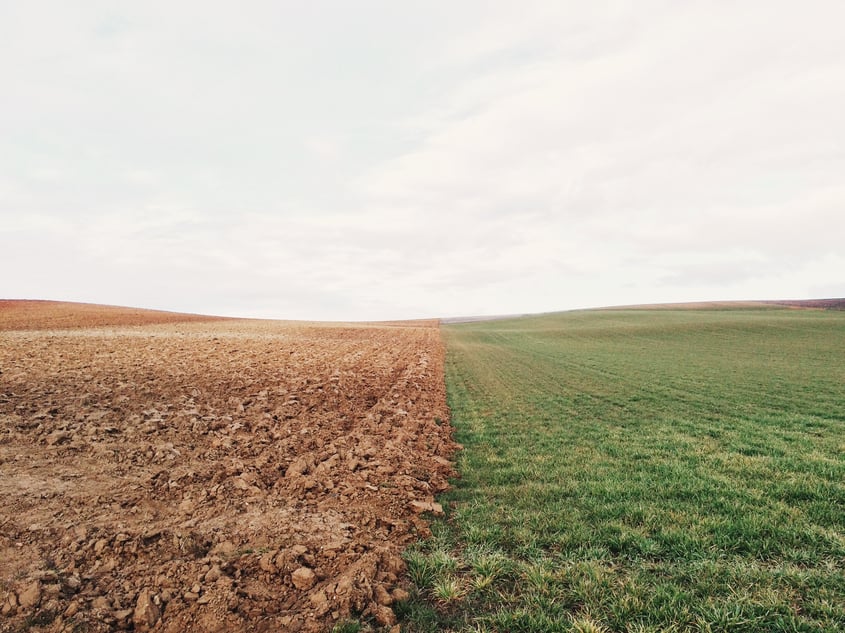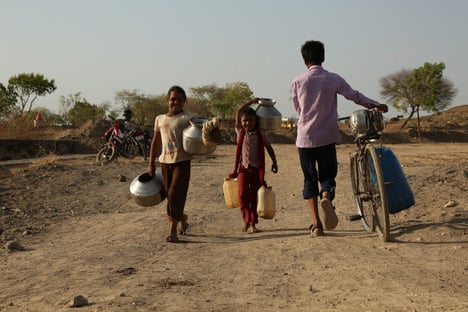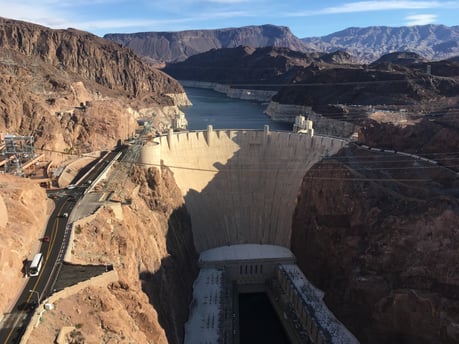
For many of us, water is a resource that we take for granted.
We wash our hands, flush the toilet, fill up a glass straight from the tap and enjoy long, hot showers. For those who enjoy this kind of abundance, the idea of water scarcity is abstract. For others, it’s a daily reality. And the issue only stands to get worse throughout this century.
Enter the water wars.
Right now, over two billion people suffer from problems with their water - whether it’s getting enough clean water to drink, or safely dealing with wastewater. Experts predict that within the next four years, two-thirds of the world could face water shortages. Which makes water scarcity a harsh reality for both the present and the future.
But there’s a new way to deal with water scarcity on the horizon. Starting in early December of 2020, water joined gold, oil and other commodities and is now traded on Wall Street.
Freshwater: An Already Scarce Resource
Digging back to high school biology (way, way back for some of us...), I remember that the amount of water on earth today is the same amount that has always been here. We can’t create water.
So, why aren’t we still the abundant blue planet we once were?
While almost 70% of the earth is covered with water, only 2.5% is freshwater, and a scant 1% is actually available for us to use. The rest of that freshwater is trapped at the poles, in glaciers or in snowfields.
Where Has All the Water Gone?
Although we technically have the same amount of water as the dinosaurs had, the usability factor has changed. Climate change, plus the twin peaks of increasing population and pollution, means that the water that is in liquid form and relatively fresh is under some stiff competition.
Plus, modern society uses water like it’s free.
Water use has increased at more than twice the rate of population growth in the last century. And some of our most delicious indulgences use a lot of water. For example, the average hamburger takes 630 gallons of water to produce and one - just one - organic cotton t-shirt takes 660 gallons.
But it’s more than just an excess of burgers and soft t-shirts causing usable water to evaporate before our eyes.
Today, NASA satellites have a really cool way to keep track of where the water is going.

Scientists can add and subtract water droplets as they move from water vapor to rain and snow, and watch as it seeps into soils and moves underground. With that kind of information, we can also see other variables, like how
temperature has impacted the cycle of floods and droughts - two events that are alarmingly increasing in recent years by both frequency and magnitude.
For most of us, the global water cycle remains a bit abstract. But if we look close enough, it’s not too hard to see that disturbances in the water cycle from climate change, population growth and pollution also produce disturbances in how we can use it. This disturbance will ultimately impact how and where crops crow, the navigability of rivers, and closer to home, how our infrastructure adapts to heavy rainfall events.
Women and Water: A Gender Equality Issue
For women and girls in low-income countries, it can be hard to lead a healthy, productive life when there is a shortage of safe drinking water and suitable sanitation. Here, the burden of managing the household water supply falls on young girls and women. This means they have to be sure there’s enough water for everyone in the house to drink, bathe, cook and clean with, no matter where it comes from. Often this responsibility is dangerous, time-consuming and labor intensive.
Because of the lack of safe and reliable infrastructure, this responsibility supersedes any other obligation or activity girls may have. Unfortunately, this means that many young girls are left behind when it comes to education, health and even their personal safety. In many places their time and energy is spent just gathering enough water to survive. Sometimes that is seasonal, allowing girls to attend school part of the year, but often it is a year-round burden.
In countries that experience both water scarcity and gender inequality, finding solutions to safe drinking water, adequate sanitation and even the ability to privately care for personal hygiene must be addressed in order to give girls the tools to achieve their full potential. One way some countries are successfully implementing new water policies and programs is by including women and girls in the conversation from the beginning. By taking into account different sectors of a local community and being inclusive from the beginning, women and girls' needs can be met, as well as providing enough safe water for the community.
Will We Really Go to War?
The answer to whether the water wars will be an actual war or an economic war is playing out before our very eyes. But we also have some clues from the past that can tell us what might be coming our way on a global scale.
Both the Maya civilization in Central America and the Anasazi (the Ancestral Puebloan) culture in the U.S. Southwest collapsed due to prolonged droughts. In the case of the Mayan civilization, a recent study found that it might have been the irrigation technology they used that made their society vulnerable to changes in climate - proving that our urban infrastructure is more important than ever.
But truthfully, we don’t even have to go that far back to find evidence of disturbances in the water cycle upending economies. The worst drought in 500 years in Syria began in 1998 and caused millions of people to migrate, exacerbating already tense socio-cultural complexities, and resulting in a devastating civil war.
Real war, or an economic war, the bottom line is that when clean water is short, there are big consequences.
Where Water and Economics Meet

No matter our individual realities when it comes to our daily water use, experts have declared that we’re leaving the century of oil and entering the century of water. And the news about water being traded on Wall Street confirms that prediction.
The new water futures contract is meant to protect California’s biggest water consumers from unexpected and skyrocketing water prices. It’s also used as a gauge for scarcity for other investors worldwide. In theory, this will help water users manage risk, and better line up supply and demand.
Will it work? Time will tell, but any effort to pay serious attention to our declining freshwater supply could be worth the risk. I don’t know about you, but going to war over water isn’t all that enticing.
How Can You Help Ease the 21st Century Water Wars?
One of the best ways to ensure geopolitical peace is to help improve access to safe, clean drinking water right now. The less hardship people face due to water shortages, the less opportunity there is for hoarding, profiteering and warfare. Which we’re all in favor of, right?
Some of our favorite hydro-centric organizations right now include:
- Brave Blue World Foundation
- FLOW for Water
- Water Environment Federation
- Majik Water
- Alliance for the Great Lakes
- Water.org
Infrastructure projects are pivotal is maintaining our freshwater resources. The impacts are far greater than we can imagine. If you're interested in learning more about how you can incorporate green infrastructure elements into your commercial or residential property, contact us.

